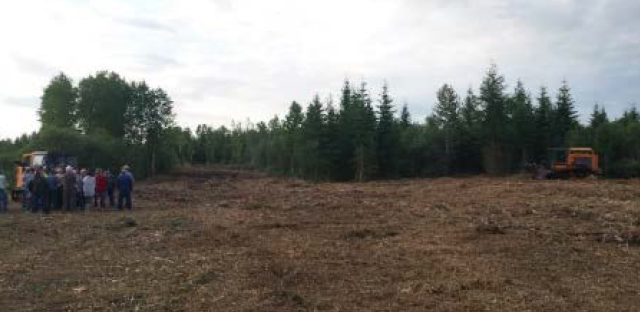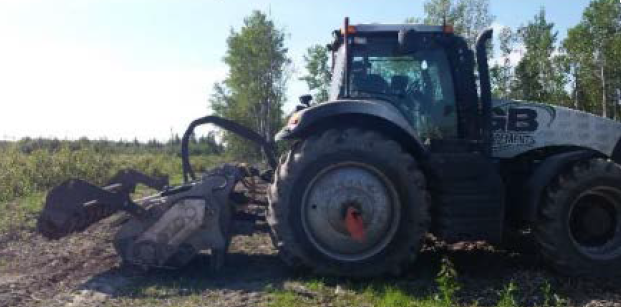Summary
This three-year project had two main objectives: (1) to assess the soil impacts and crop growth potential resulting from a mulching/subsoiling process and (2) develop a business case that will evaluate mulching and other methods of traditional land clearing. Two sites were mulched and sub-soiled in 2015, with forages and crops planted in the two following years. Based upon soil samples and field monitoring, a viable crop can be grown immediately after mulching, however yields were less than those on the conventionally cleared plot. The level of organic matter and the carbon-nitrogen ratio are increasing at a faster rate on the mulched plot compared to the conventional plot.

Management strategies for future mulching could consider:
- Complete mulching in the fall, let the residue winter on the ground and subsoil in the spring
- Plant a high biomass crop for the first year or two to give wood residue time to break down and further incorporate within soil
- Broadcast or aerial seeding to reduce seed displacement caused by mulched seedbed.
- Thoroughly incorporate the woody material into the seedbed – seedbed preparation is key to proper seed placement.
- Monitor soil health with soil sampling and add amendments according to results. High levels of fertilizer will likely be necessary, especially for mulched fields. This is also an important consideration for land clearing in general.

A second objective was to develop a business case evaluating mulching and other methods of traditional land clearing. This reference document considers four key phases that could exist prior to clearing and provides information on the process, timing, cost, end-use, pros, cons & considerations for each. The four phases can be assessed separately or together, depending on the characteristics of the land to be cleared. The document can be found at www.nofia-agri.com or at www.farmnorth.com.
Acknowledgements
This project would not have been possible without the support and commitment from project partners:
GB Equipment, located in Sainte-Brigitte-des-Saults, Quebec, provided both rounds of land preparation (surface mulching & subsoiling) as an in-kind contribution. Further information on GB Equipment and their services can be found at www.gbequipment.ca
Carl Dodds & Will Runnalls: the producer cooperators have donated acres for the duration of the project and have donated their time and equipment for various activities, including timbering, planting, harvesting, etc.
OMAFRA: Dan Tassé, Tom Hamilton, Barry Potter
Project Steering Committee
